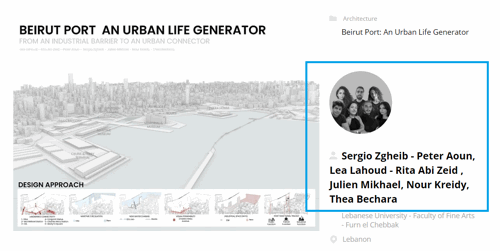From 1:1 to 1:1000 : (Re)-generating New Spatial Model in underdeveloped urban settlements, the Case of Shuto Orizari, Skopje

Idea projektu
The 21st century is characterized by rapid intellectual, technological, and economic development, which causes the continuous emergence of new social and cultural currents and migrations. The city, viewed as a state of constant creation, is directly shaped by these aforementioned socio-economic and socio-political relations and actions. As such, it is based on continuous urban transformation, which causes its constant (often uncontrolled) growth and expansion. These processes have contributed to the fact that today more than half of the world’s population lives in urban environments, a situation that predicts that by 2050, it is expected that 70% of the population will live in urban areas. However, contrary to the positive development of cities, by the same year, it is anticipated that more than half of the urban population will live in underdeveloped areas - slums, with limited access to basic living conditions and restricted resources.
Consequently, following the example and experiences from the development of the city of Skopje and the municipality of Shuto Orizari (the biggest slum in the country), this project aims to create a new urban stimulus that will attempt to perceive the transformation of the city not as a necessary occurrence, but as a right and responsibility to create concrete and real growth that will meet the needs of the person today, and of the person tomorrow.
Popis projektu
The projects is consisted of several parts or living scenarios. The first one is the housing which is consisted of a habitat unit and a yard, the second one is the public space with the active modules, which serve as a social capacitor for the local population and the last one which is the communication and circulation consisted of the pedestrian zones and streets.
The housing - habitat unit + yard - represents the necessity of the local population where severe lack of proper housing conditions can be noted. As such, the project supplies the community with housing units, where each of them is available for the one that need it the most.
The public space with the active modules serves as a connecting point for the local community, which is closely tied together and whose life is mostly focused in the outside, rather that the inside. According to that, the public spaces, located in-between the units, are consisted of different types of programs, such as, open-air cinema, green markets, libraries, daycare, squares, and so on.
The communication and circulation (pedestrian zones and streets) are not merely seen as a transitional areas, but as meeting points and connecting lines, where the interactions of the locals happen.
All of the mentioned elements are put together, based on the concept of the living machine, where every element, every need, and every requirement are put together, creating possible scenarios, outcomes and planning procedures. Eventually, the living machine programs, aims to give the slum a chance of growth, not only for the population itself, but for the city as well.
Technické informace
The architectural - urban model itself represents a megastructure composed of two elements – infrastructure and construction. The infrastructure consists of a network of so-called infrastructural batteries that enable the supply of electricity, water, and sewage, while the construction represents a reinforced concrete skeleton that is filled or emptied depending on the population, needs, and cycles. The infrastructural network develops according to a 12-meter module in both directions, while the structural skeleton develops according to a 6-meter module and a height of 3.06 meters. It is developed on a ground floor plus two floors (G+2), forming a total height of 9.18 meters, compared to the permitted 10.2 meters.
Each unit consists of 2 modules or 72 m² of gross area, or 216 m² of developed area. Of these, 72 m² of gross area belong to the yard space (ground floor), and 144 m² of gross area are intended for housing (+1 and +2). The boundaries of each unit are defined by means of previously defined partition walls with a thickness of 30 cm, in order to resolve property-legal relations.



